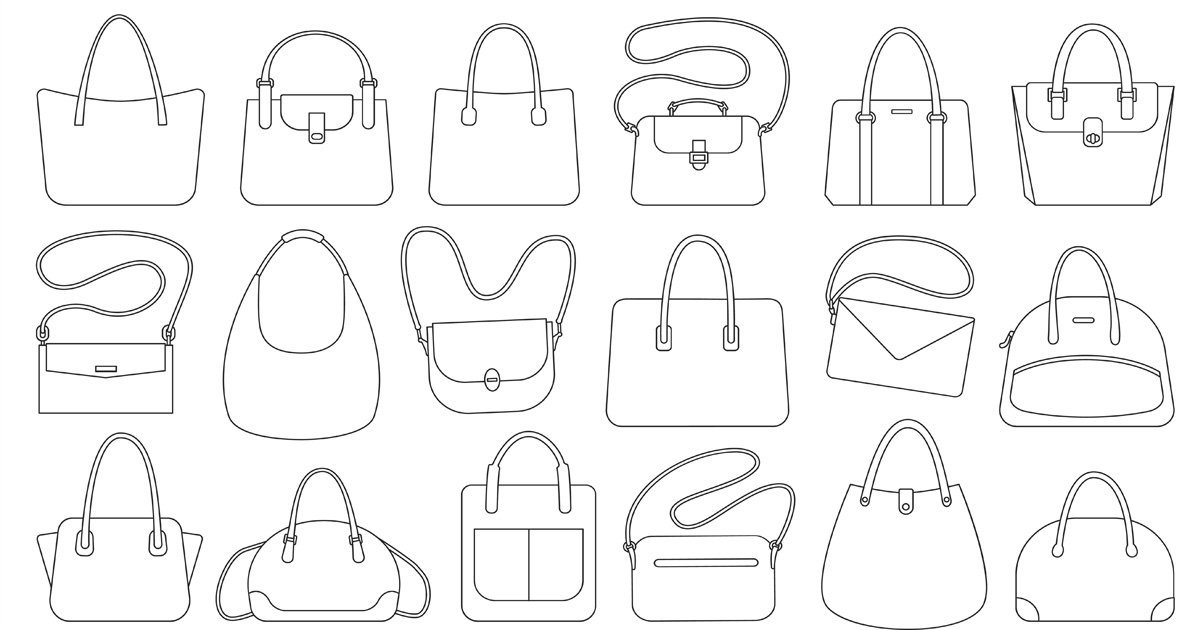The Complete Guide to Importing Bags from China- For Importers
China has become the World’s manufacturing hub in the recent decade, all because of its excellent business ecosystem, skillful labor, and its regional connectivity with the rest of the World.
Mainly the business ecosystem is super-developed with a vast network of manufacturers, logistics, and suppliers. More than half of online businesses are looking for products in China.
If you are a potential bag importer or starting your own bag business in your country, you should choose China for importing bags. There are more than 20,000 bag manufacturing companies in China, so it is more cost-effective and you will get diversity in bags here.
This article will be a complete guide for you in terms of market research, finding reliable manufacturers, payment methods, shipping cost, overall cost, and every other detail you need to know while importing bags from China.
Let’s get started!
1. Why Import Bags from China?
There are many good reasons to import bags from China such as:
Cost Advantage and Profit Margins
China is known for its low-cost labor which makes it a desirable country to import handbags to anywhere around the globe. Especially, if you are just starting your bag business, China should be your top priority.
Low-cost labor enables the manufacturers to give a reasonable quote to the importers as compared to if you try to make it locally.
Moreover, you can increase your profit by ordering in bulk amounts. When you order in wholesale or bulk, this will help reduce the per-unit cost.
Wide Range of Product Selection and Customization

As already mentioned, more than 20,000 bag manufacturing factories in China provide you with a wide range of bag selections and most of them also offer custom-made bags of your choice. Even you can find manufacturers that solely work on custom bags.
From handbags, tote bags, leather bags, shoulder bags, wallets, and cargo bags to purses, there is a long list of types of bags produced in bag factories.
So, there are endless types of bags produced in China, it is up to you to decide and customize the bags accordingly. Whether you want to go with OEM or the private label for your business.
Quality Suppliers and Assurance
The success of your business depends upon a reliable supplier. The first thing to do is to select a reliable manufacturer and ask for the product checks. Your supplier must possess quality-check certificates like ISO 9001 to ensure the product meets the high-quality standard. Other than this, make sure your supplier adheres to any industry-related regulations.
Many Chinese suppliers focus on producing quality products on time. It is now up to you to find such suppliers.
2. Product Market Research and Profit Margin Calculation
Now let’s talk about the market research for bags and then calculate the profit margin.
Analyzing Market Demand for Products

Here we are talking about the bags, so, you need to analyze the number of products that you should import at a specific price within the bag market.
You can analyze the market demand for your product by doing a manual one-to-one conversation with real people or using the tools to listen to your consumers.
- SEO tools are a great way to analyze the market demand. Keyword Surfer for example is a free Google Chrome extension that provides search volume, keyword suggestions, and average organic traffic.
- Or Google Trends which is a free and popular tool to know public demand for your product.
- Moreover, you should also do competitor analysis. Tools like Semrush and Ahrefs have competitor analysis tools for your ease.
Target Customer Analysis
Before looking for a product in the market, it is important to do a target customer analysis. The goal of your business is to understand the wants, needs, and pain points of your customers.
If you want to go big, study the retailers, B2B clients, and Amazon buyers deeply. Obviously, you will be doing a thorough customer analysis to better understand what drives people to make a purchase from you.
You need to do detailed research to learn more about consumer preferences. Plan on studying the stats and market trends.
Studying the latest trends and reports related to your market will help you understand your consumer preference so that you can invest in the right type of bags.
Cost and Profit Calculation
When you have finally decided to import the bags from China, the first thing an importer should do is calculate the total actual cost (Landed Cost) of the bag before importing it. The landed cost includes everything from production costs and tariffs to any 3rd party costs.
How to calculate per-unit product costs?
Calculating the cost per unit helps you to set the price and ensure it is profitable.
The formula to calculate cost per unit: Total Product Cost/Total unit produced.
Your cost per unit should always be higher than your price per unit. Remember you can only secure profit when C.P.U > P.P.U.
How to Calculate the Profit?
To calculate profit per unit, you need to find the difference between cost per unit and price per unit.
Profit Per Unit = C.P.U – P.P.U
Evaluating Market Competitiveness
Before entering the market live, it is very important to know who your competitors are and how they operate their businesses.
Learning about your market competitiveness is known as competitive market analysis, which is an important initial step.
After this basic analysis, deeply study the bag market saturation in your country and other factors affecting your business such as regional differences.
3. Preparing for the Import Process
Obtaining Import Licenses and Understanding Regulations
What is an Import license?
An import/Export license is a document issued by Government agencies that allows the trade of certain products. If you are importing to the USA, you may or may not require an import license.
It is important to note that not all products need an import license, it depends on various factors including the item being imported, the country of origin of import, sender and receiver, port of entry, intended use of the product, and regulations set by PGAs.
Import regulations and requirements in various countries
Nearly, all the countries have some specific regulations and requirements for importing goods to them. It is very difficult to find the import regulations of all the countries.
But obviously, you want to know about your own country and China. For that, you need to search for the department in your country that deals with import regulations.
As far as the USA is concerned, you should look for import requirements on the Export Assistance Portal made by the US Government.
Whatever country you belong to, look for your country’s import regulations and other requirements, keep all the documents ready, and pay all the relevant taxes and tariffs.
Finding and Evaluating Suitable Suppliers
When you get to know you can import the bags from China, the next step is to find suitable and reliable manufacturers or suppliers.
If you are wondering how to find good Chinese suppliers, here are some approaches to do so:
- Use Alibaba: The first name that comes to mind when you think of Chinese suppliers is Alibaba. Its huge marketplace has thousands of suppliers listed where you can directly connect with the manufacturer. Keep in mind, that you will find every kind of supplier here, so strong communication will be required.
- Other B2B marketplaces: Other than Alibaba there are several other B2B marketplaces that can also connect you with good suppliers such as DHGate, Made-in-China, etc.
- Sourcing Agent: If it is difficult for you to find suppliers on these marketplaces, you can opt for a sourcing agent.
- Visit Trade shows: Another effective way to connect with several suppliers is by visiting the trade shows organized in China. The biggest Import and export Fair held in Guangdong known as The Canton Fair twice a year. Arrange a trip to this fair and personally handle all the import process.
Methods for verifying supplier legitimacy and reliability
When you are verifying the legitimacy of the Chinese suppliers, here are the ways how to verify them:
- Use your search engine to know more about them.
- Open their website and go through the policy page, verify their address, phone number, and email address.
- Check the company’s profile on other B2B marketplaces such as Alibaba, Global Sources, Made-in-China, etc, and read their reviews.
- Ask your supplier that you will conduct a factory audit and inspection of their production.
- Next, check their Chinese business license.
- Visit the company or the factory in person.
- To verify the supplier’s financial credibility, ask for their bank’s reference letters.
- For further verification, ask for their previous customers and don’t hesitate to contact them too.
Sample Testing and Product Quality Confirmation
When you have decided to go with a particular manufacturer, the next step is to ask for sample testing.
Request to order the sample bag, and assess the design, quality, durability, and functionality. Check thoroughly, if it meets your standard specifications and market standards.
Steps to order samples and conduct quality tests
This is how you can order your first sample from China:
- Give clear and concise instructions to your supplier about the type of bag you want: material, dimension, any specific design, color, etc.
- Also, convey the number of sample articles you want to receive and their upfront payment. Ask for the price per sample.
- Tell them about the packaging you want and the preferred method of shipping.
- Lastly, it is better to add the timeline within your sample request.
How to ensure that the products meet the standards and needs of the target market.
Once your sample reaches you, now is the time to inspect the sample keenly. Here is what you should be monitoring:
- Check if the material feels right to you. Is the craftmanship up to your expectations and standards?
- Does the sample meet all the specifications and requirements you mentioned?
- Double-check all the dimensions, colors, and other things you asked for.
- Inspect closely for any errors, defects, or imperfections.
- Check if your product works perfectly.
- Make sure to take feedback from others.
If everything looks okay, then that’s great!
Proceed to the next step, which is to compare this sample product to the local market product and see if it fits.
4. Key Steps in the Importing Process
Negotiating Purchase Contracts
Once you have decided to go with a particular supplier and test the sample, the next step is to negotiate the terms and price with your supplier. Here is how you should negotiate:
- Do a little homework on your supplier such as his competitors in the market, the overall market rate of your product in China, order quantity and delivery time, etc.
- Use a neutral translator, show interest in their products, give compliments, appreciate their time, be honest and transparent, and stay professional with them.
- While negotiating don’t only get stuck on the price. You should also negotiate on other terms like minimum order quantity, delivery time, warranty, quality, and payment method.
- After negotiating, don’t forget to confirm everything in writing and add these terms to your formal contract before starting your deal.
Import Duties and Taxes
The import duties on your product can be easily calculated, if you know the value of your shipment which includes the actual price of your product, insurance, and shipping costs. These values are declared in the bill of lading which is given by your shipping partner.
Next add the custom-clearance charges, warehouse costs, and the inspection fees to the above-listed charges.
Tips on optimizing import costs and reducing unnecessary expenses
- You should know your Total Cost of Ownership which includes the costs from production, inspection, shipment, storing and other import duties, and customs clearance taxes. This will help you negotiate with the suppliers as well as the shipment partner so that you can get everything within your budget.
- Another important thing is to declare the exact and correct shipment value to the Customs. If you have declared everything correctly, no one can over-charge you.
- Choose the right Incoterms which are the international rules for international transactions. Choosing the right Incoterms helps you to reduce the import cost by avoiding unnecessary charges and delays.
- Another way to cut your import cost is by optimizing your inventory and logistics management effectively.
Choosing the Right Shipping and Logistics Method

Pros and cons of different shipping methods
When it comes to choosing the right shipping method, both air and sea freight have their pros and cons:
| Shipping Method | Pros | Cons |
| 1. Sea Freight | · Cost-effective and cheapest shipping method. · No restriction of size or weight. · Suitable for bulky or heavy items. · Perfect for non-urgent items. | · Longest transit time among all. · Risk of damage or loss. · Additional issues in customs clearance · Not suitable for landlocked regions. |
| 2. Air Freight | · Quickest shipment method. · Worldwide coverage. · High security and least risk of damage. · Perfect for time-sensitive items. | · Highest shipping cost among all. · Limited cargo with size limitation. · Additional custom procedures. · Not suitable for certain remote areas. |
| 3. Express Carriers | · Speedy delivery of shipment. · Excellent tracking of shipment with real-time updates. · Enhanced security and care for fragile items. · Additional services such as Insurance and customs clearance assistance are available. | · Higher shipment cost. · Additional surcharges and fees for certain remote areas. · Weight as well as size limitation. · Not suitable for small orders. |
You can easily check, what suits you. Since your product (Bag) is a non-fragile, not time-sensitive, and not too heavy item, it is recommended for you to use sea freight.
5. Marketing and Sales Strategies
Creating a Marketing Plan for Imported Bags
The right marketing plan is essential when it comes to marketing your imported bags.
Social Media Marketing
The best place to market your product nowadays is the social media. Social media platforms can help you reach a wider audience in no time. Apps like Facebook, TikTok, Instagram, and even YouTube are the main target platforms with billions of users, especially youngsters.
For social media marketing, you need to post your content regularly, hire a famous influencer with millions of followers to promote your handbag, or run sponsored ads on them.
Email Marketing
Another professional way to promote your new business is through email marketing. This is the type of marketing that allows your customers on your email list to know about your new product.
Trade Show
Another great way to advertise your imported bag line is by attending the trade shows around you. Trade shows are an effective way to communicate with people face-to-face and monitor the level of interest they are showing.
Pricing Strategy and Market Penetration
Pricing your product is not a straightforward thing, it involves lots of internal and external factors including revenue goals, target audience, product attributes, market demand, etc.
So, evaluate what type of pricing strategy will work for you. Find your ideal price both for retail and wholesale.
Since you are just starting, it is recommended you should go with the promotional discount strategy at first which means you offer a promotional discount or special deal for a limited time to attract new customers. This strategy is best both for retail as well as wholesale.
Choosing the Right Sales Channels
Sales channels are the places where buyers and sellers are matched up for selling products of all kinds. There are 3 main types of sales channels:
- Price comparison sites: Sites where customers can compare multiple products at a time.
- Marketplaces: They are the most popular sales channels where direct purchases happen without going to the merchant’s website e.g. Amazon, eBay,
- Social Media Networks: Social media platforms like Facebook and Instagram where you can find local partners.
Other than the sales channels, you should also build a strong network by working with local partners and other retailers. This will help you increase your reach.
6. Post-import inventory and Supply Chain Management
Inventory Management and Warehouse Optimization
When your imported bags reach your destination, the next step is to manage their inventory. Large-scale inventory management is not an easy task, so you should follow these tips:
- Use the first in, first out approach.
- Identify your low-turn stock and apply several strategies to get rid of them i.e. promotional discounts and deals.
- Use cloud-based inventory management software and don’t just rely on it. Audit your inventory regularly.
- Keep tracking your stock levels all the time.
- Inspect and check the quality of your products. Make sure your products look fine and fully functional.
- Hire a stock controller to process the inventory seamlessly.
- Partner with a reliable logistics partner that works quickly to avoid inventory pressure.
Long-Term Supply Chain Planning
To build a strong supply chain, it is important to keep long-term relationships with your supplier. This is how you can do so:
- Clear and consistent communication with your supplier allows you to avoid any misunderstandings and build a bond between both of you.
- You should provide regular updates and your plans in terms of your product and establish a system of exchanging feedback.
- Mutual respect and trust are essential to build a healthy supplier relationship. Adhere to the terms and conditions mentioned in the contract and make your payments timely.
- Always make strategic partnerships compared to transactional partnerships.
- Long-term relationships offer great stability in your supply chain. So, implement loyalty programs or incentives for your long-term suppliers.
7. Common Challenges and Solutions
Supplier Dishonesty or Product Quality Issues
Sometimes you will end up with a supplier who is not 100% honest with his work or the quality is not up to the mark. If you ever end up in such situations, here is how you can resolve the issues:
- Before they ship your product, make sure you have a clear and detailed contract that includes quality requirements, dispute resolution procedures, and other liability clauses. This will help you avoid unnecessary issues.
- Communication is the key to avoiding mistrust and misunderstandings between you both.
- For your convenience, you should go for reliable 3rd party inspections for product quality checks. Proper inspections help you avoid any further product quality issues.
- When you face any quality dispute, make sure to convey it to your supplier in an appropriate way.
Shipping Delays and Customs Clearance Issues
Sometimes you may face shipping delays. Here are some reasons that might cause delay:
| Shipping Delays | How to mitigate them |
| 1. Any global emergency such as a Pandemic etc | Unfortunately, you can’t foresee this kind of situation, so you can only wait in this case. |
| 2. Possible supply chain disruptions | Build a strong supply chain and have a backup supplier. |
| 3. Bad weather and natural disasters | Ask your freight forwarder to look for alternative routes as soon as possible or wait for the weather to get better. |
| 4. Federal and international holidays | Plan your shipment on other dates available. |
| 5. Labour Issues | Ask your supplier to comply with the contract’s terms and manage to deliver the inventory on time. Otherwise, you won’t pay the set price. |
| 6. Wrong or incomplete shipping data | Double-check all the details carefully. You must provide your current and working phone number, email address, and complete shipment address. |
Besides shipping delays, you can also face customs clearance issues and your shipment stuck there. Here are some tips to avoid these issues:
- Know everything about the import regulations, customs duties, tariffs, taxes, and other things about customs clearance.
- From invoices, bills of lading, certifications, and permits to import licenses, you should submit all the necessary documents on time.
- Establish regular and clear communication with the stakeholders from suppliers to freight partners.
Impact of Changes in Import Policies
With the change in the government, you can expect some changes in the import policies too. Policies don’t need to change with the government only, sometimes certain reforms in the policies are made which can affect your supply chain.
New taxes can be introduced or prices can be revised, which can affect your budget. So, it is important to keep an eye on these changes to avoid further confusion and delays.
Conclusion
If you have made up your mind to import bags from China, then this article is the best way to start your journey.
The bag market in China is quite diverse, you can get any kind of bag here with full customization and personalization options. To do a successful business, you should look for a reliable supplier and build a long-term relationship with them.
Mherder is a fine example of a trusted manufacturer and supplier with many years of experience. They made all sorts of leather bags, from tote bags, wallets, and cardholders to leather handbags and belts, etc. If you want to know more about the manufacturer, you can check their website and contact their agent to get a quote.
So, read this detailed article carefully, because we have discussed everything about how to import bags from China.



